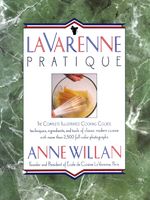Advertisement
Melons
Appears in
By Anne Willan
Published 1989
There are two kinds of melon—the dessert melon and the watermelon. Dessert melons have tan, green or yellow rind and dense, fragrant flesh. Depending on their variety, the skin is either netted (covered with brown, fibrous net-like markings) or furrowed. The watermelon has thick, dark green skin flecked with yellow, which surrounds red, pink or yellow watery flesh.
Perhaps the most familiar dessert melon is the cantaloupe. In the United States the name is given to a round netted melon with a tan-colored rind, while the European cantaloupe is more craggy and furrowed in appearance. Both have salmon-orange, highly-scented flesh that is quite firm and exceptionally sweet. Similar to the cantaloupe, but smaller, is the French Charentais. The ridged Ogen and the larger Galia both have green flesh. The pink-fleshed Persian melon is oval, while the particularly sweet honeyball is yet another common variety; both have lightly netted yellowish skin.


